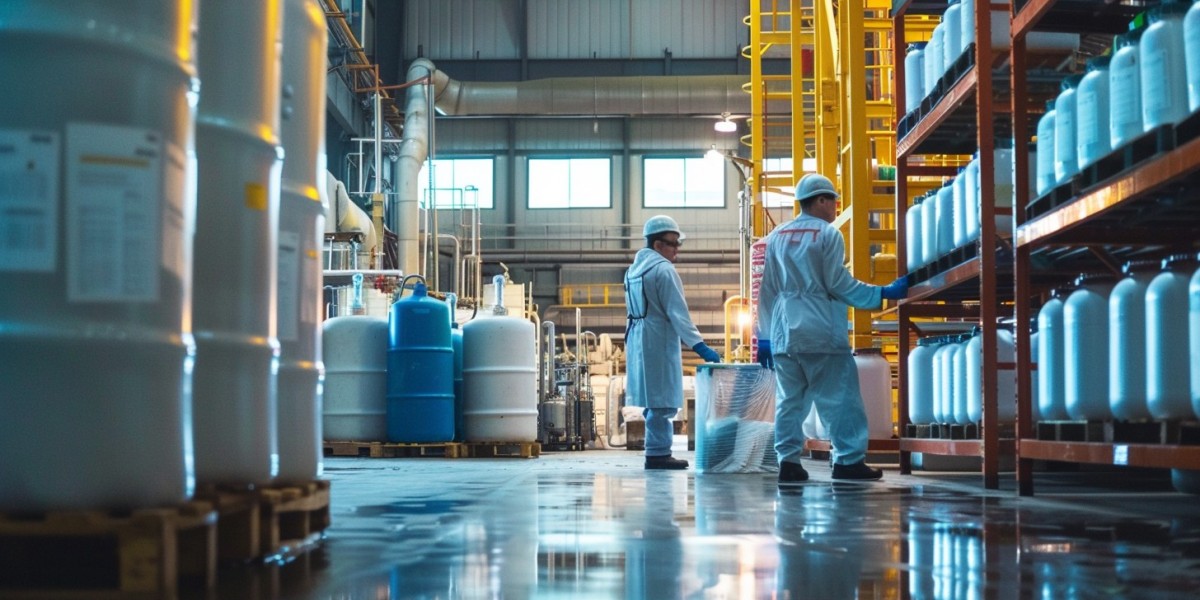Chemical cleaning products have become essential across industries—from manufacturing and healthcare to hospitality and food services. These specialized formulations are designed to remove stains, dissolve scale, disinfect surfaces, and ensure equipment longevity. Chemcomplex, a global chemical manufacturer, supports this demand with a range of surfactants, solvents, and eco-conscious ingredients that meet both performance criteria and sustainability goals.
1. What Defines Chemical Cleaning Products?
Chemical cleaning products are scientifically engineered solutions combining multiple active components:
Surfactants: Reduce surface tension to lift dirt, grease, and grime.
Builders or Chelating agents: Bind hard-water minerals to enhance cleaning.
Acidic or Alkaline agents: Address scale, oils, fats, and inorganic residues.
Disinfectants: Destroy microbes using quaternary ammonium compounds, peroxides, or chlorine-releasing agents.
Specialty Additives: Foaming stabilizers, enzymes, fragrances, and corrosion inhibitors.
From household multipurpose sprays to industrial-grade CIP (Clean-in-Place) chemicals, the right blend depends on the application—from removing oil in a factory to sanitizing equipment in a pharmaceutical lab.
2. Chemcomplex’s Role in Chemical Cleaning Solutions
Chemcomplex primarily focuses on supplying raw materials—key ingredients like surfactants (e.g., Capryl Glucoside), solvents, acids, and bases—used in high-performance cleaning formulations. One standout ingredient is Capryl/Caprylyl Glucoside—a plant-derived, non-ionic surfactant prized for being gentle, biodegradable, and multifunctional .
3. Deep Dive: Capryl/Caprylyl Glucoside
A. Source & Nature
Produced by reacting glucose (from corn) with fatty alcohols sourced from coconut or palm .
Non-ionic surfactant: neutral charge, stable across a wide pH range .
B. Performance Benefits
Cleans and lifts oils effectively while remaining gentle on surfaces and skin .
Foam booster, ideal for detergents and sprays.
Solubilizer, allowing dispersion of oils and fragrances in aqueous solutions .
C. Safety & Environmental Profile
ECOCERT certified, biodegradable, and plant-based .
Safe for skin and environmentally friendly, with low irritation potential—though it may irritate eyes at high concentrations .
D. Formulation Guidelines
Effective at 10–30%, with a maximum safe use up to 40% in cosmetics and cleaners .
Works synergistically with other surfactants (e.g., cocamidopropyl betaine) to balance cleaning power and mildness A .
4. Core Categories of Chemical Cleaning Ingredients
Chemcomplex supplies several key chemical categories for formulating effective cleaning products:
Surfactants
Non-ionic (like Capryl Glucoside) and ionic types ideal for multipurpose cleaners, dishwashing solutions, and spray products.
Solvents & Degreasers
Used for heavy-duty degreasing in metal shops or engine maintenance.
Acids & Bases
Acidic descalants (citric, sulfamic acid) for removing mineral deposits.
Alkaline agents (caustic soda, sodium metasilicate) for breaking down fats and proteins.
Chelating Agents & Builders
EDTA alternatives for softening hard water and enhancing surfactant efficiency.
Disinfectants & Sanitizers
Compounds like quaternary ammonium salts and peroxides to eliminate bacteria, fungi, and viruses.
5. Why Chemical Cleaning Products Matter
Hygiene & Safety
Essential for infection control in hospitals, food facilities, laboratories, and schools.
Equipment Longevity
Prevent corrosion and fouling, extending the life of boilers, pipelines, and tanks.
Process Efficiency
Automated CIP systems reduce downtime and increase productivity.
Environmental Responsibility
Transition to biodegradable surfactants like Capryl Glucoside supports green initiatives and regulatory compliance.
6. Current Trends Driving the Market
Green Chemistry: Rise in plant-based, eco-friendly ingredients with certifications like ECOCERT, COSMOS, and Green Seal .
Low-VOC Formulations: Reduced volatile organic compounds for safer indoor air quality.
Smart Dispensing and Precision Dosage: Minimizing waste and improving safety with controlled release systems.
Regulatory Pressures: Stricter global controls (e.g., EU’s REACH, US EPA) necessitate safer ingredient profiles.
Performance with Gentleness: Particularly in household and personal care segments, consumers demand strong cleaning performance that’s also gentle on skin.
7. How to Choose the Right Chemical Cleaning Product
Identify the Challenge
Grease, scale, organic residues, or microbial contamination?
Select the Proper Chemistry
Acidic for scale, alkaline for fats, surfactants for oils, or biocides for microbes.
Review Safety Data
Check SDS for hazards, required PPE, compatibility—e.g., never mix bleach with acids.
Validate in Real Conditions
Test small-scale batches to ensure efficacy and material compatibility.
Check Environmental Metrics
Look for biodegradable labels, low-toxicity profiles, and recyclable packaging.
Consider Economics & Supply
Transparent pricing, reliable logistics, and scalability matter—Chemcomplex supports global shipping and offers multiple packaging formats .
8. Sample Formulation: Eco-Friendly All-Purpose Cleaner
Ingredients
Capryl Glucoside: 10–15%
Co-surfactant (e.g., cocamidopropyl betaine): 5%
Mild acid or alkaline buffer: 1–3% (adjust pH)
Chelator (e.g., sodium citrate): 1%
Fragrance: 0.2–0.5%
Deionized water: Balance
Benefits
Efficient removal of soap scum and grease
Low foaming, easy rinsing
Safe for most household surfaces
Biodegradable and gentle on skin
This formulation showcases how Chemcomplex’s Capryl Glucoside can serve as a versatile surfactant, benefitting both cleaning performance and ecological profiles.
9. Addressing Safety and Regulatory Considerations
Eye Irritation: Even mild surfactants can irritate eyes—products should include clear labeling and use PPE during application .
pH Safety: Acidic or alkaline cleaners must clearly indicate safe dilution and handling methods.
Eco Certifications: If needed, ensure ingredients have third-party verification (e.g., ECOCERT, COSMOS).
Disposal Compliance: Wastewater discharges must meet regional environmental regulations.
10. Market Outlook & Growth Drivers
Capryl Glucoside Market Expansion: Forecasts show growth from USD 275 M in 2023 to over USD 450 M by 2032 (CAGR ~5.5%) .
Emerging Regions: Rapid growth in Asia–Pacific and Latin America markets moving toward green cleaning solutions.
Product Innovation: Demand rising for “clean-label” household products, professional-grade biodegradable detergents, and enzyme-based alternatives.
Chemical cleaning products are more than just detergents—they're sophisticated formulations engineered for hygiene, safety, equipment maintenance, and environmental resilience. With shifting consumer expectations and regulatory landscapes, the industry is moving towards green, effective, and user‑friendly formulations.
Chemcomplex supports this transformation by providing high-purity surfactants (like Capryl Glucoside), acids, solvents, and chemicals tailored for efficient, eco-conscious cleaning solutions. Whether you are a manufacturer formulating your next household cleaner or a facility manager aiming for safer, greener operations, Chemcomplex's raw materials and technical guidance offer a reliable foundation.








